Tom's Hardware Verdict
The NZXT C650 is a good and quiet power supply with a fair price, given its features.
Pros
- +
Full power at 47 degrees Celsius
- +
Quiet operation
- +
Good overall performance
- +
High build quality
- +
Long hold-up time
- +
Low inrush current
- +
Fully modular
- +
Compact dimensions
Cons
- -
One EPS connector
- -
Not so good transient response at 3.3V
- -
Lower than 70% efficiency with 2% load
- -
Not compatible with the alternative sleep mode
- -
Small distance between peripheral connectors
Why you can trust Tom's Hardware
NZXT doesn't have a presence among our best power supplies, but this could change soon if they continue releasing good products like the C series model with 550W max power. Now NZXT has a 650W version. Besides an interesting design, the C650 also achieves good performance with the popular Seasonic Focus Plus Gold platform. With the current price tag, $110, it is close to the competing offerings from Seasonic and Corsair (RM650x), delivering equally high-performance levels with the Focus Plus Gold with similar capacity and quiet operation. The Corsair RM650x still leads the race though in this category, along with the XPG Core Reactor 650.
According to NZXT, its new C series models with 650W and 750W capacities can handle high-end GPUs like the Nvidia GeForce RTX 2080 Ti. Even the energy-hungry Radeon Vega RX 64 won't be a problem. Nonetheless, you should take this statement with a grain of salt since some Vega 64/56 implementations have nasty power spikes, which can create problems even for stronger PSUs. This is one of the reasons that NZXT asked Seasonic to increase the 12V OCP and OPP triggering points in the C650 model: to make sure that it will be able to handle high power spikes without shutting down. It is a double-edged sword, though, since, with high OCP and OPP triggering points, you can damage the PSU if you apply much higher than its nominal capacity, loads for prolonged periods, or loads under high temperatures. That's why we recommend within 130% OCP and OPP triggering points in platforms that can cope with overloads.

Product Photos








The popular Seasonic Focus Plus Gold platform is inside NZXT's C line, so most of the features that the corresponding Seasonic model has are present in the C650 as well. Namely the fully modular cable design, the selectable semi-passive operation, and the ten-year warranty along with the 120mm FDB fan.

Product Photos



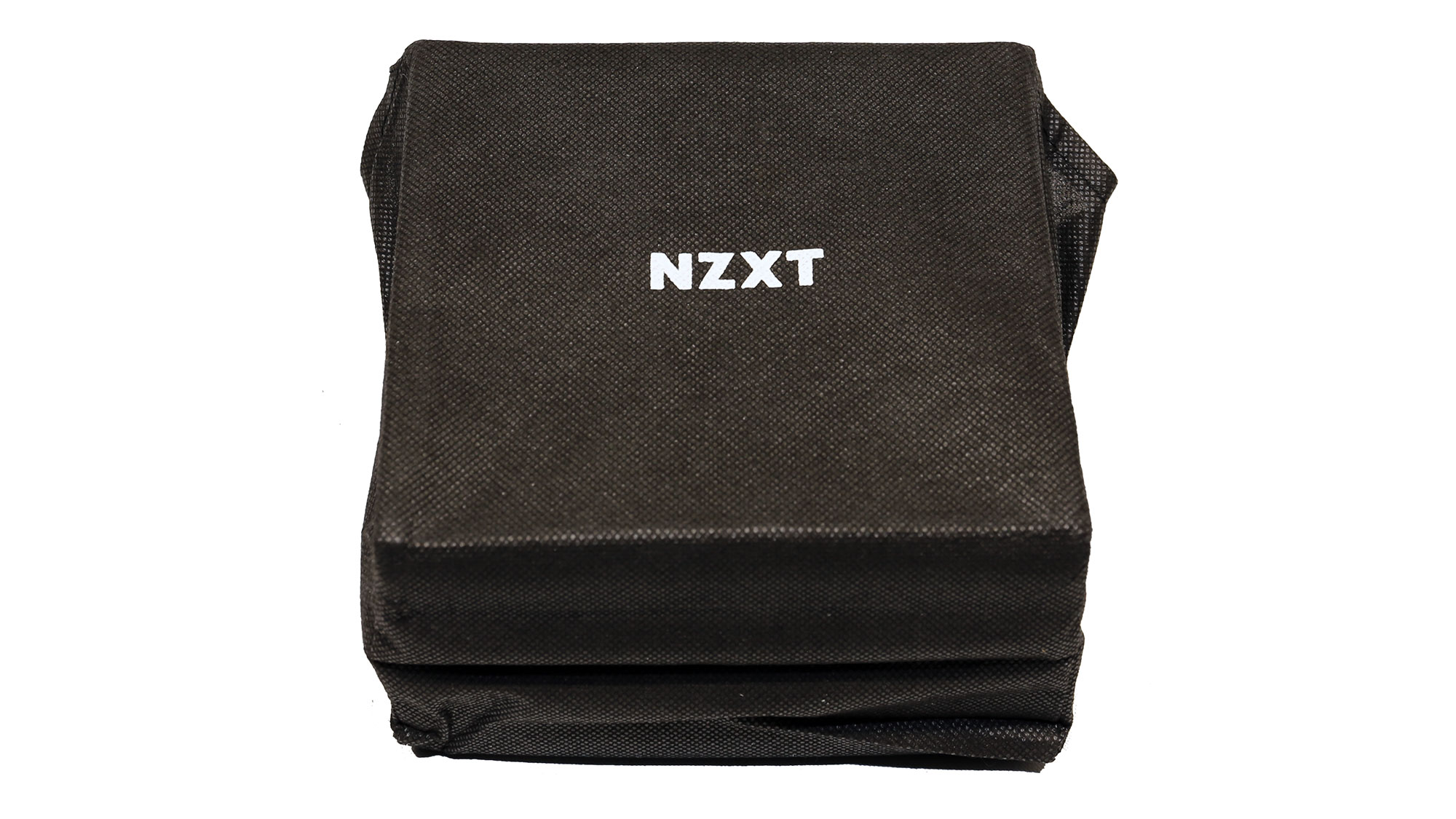

Specifications
|
Manufacturer (OEM) | Seasonic |
|
Max. DC Output |
650W |
|
Efficiency |
80 PLUS Gold, ETA-A (88-91%) |
|
Noise |
LAMBDA-A (20-25 dB[A]) |
|
Modular |
✔ (Fully) |
|
Intel C6/C7 Power State Support |
✔ |
|
Operating Temperature (Continuous Full Load) |
0 - 50°C |
|
Over Voltage Protection |
✔ |
|
Under Voltage Protection |
✔ |
|
Over Power Protection |
✔ |
|
Over Current (+12V) Protection |
✔ |
|
Over Temperature Protection |
✔ |
|
Short Circuit Protection |
✔ |
|
Surge Protection |
✔ |
|
Inrush Current Protection |
✔ |
|
Fan Failure Protection |
✘ |
|
No Load Operation |
✔ |
|
Cooling |
120mm Fluid Dynamic Bearing Fan (HA1225H12F-Z) |
|
Semi-Passive Operation |
✔ (selectable) |
|
Dimensions (W x H x D) |
150 x 85 x 150mm |
|
Weight |
1.56 kg (3.44 lb) |
|
Form Factor |
ATX12V v2.4, EPS 2.92 |
|
Warranty |
10 Years |
Power Specifications
| Rail | 3.3V | 5V | 12V | 5VSB | -12V | |
|---|---|---|---|---|---|---|
| Max. Power | Amps | 20 | 20 | 54 | 3 | 0.3 |
| Watts | 100 | 648 | 15 | 3.6 | ||
| Total Max. Power (W) | 650 |
Cables and Connectors
| Description | Cable Count | Connector Count (Total) | Gauge | In Cable Capacitors |
|---|---|---|---|---|
| ATX connector 20+4 pin (610mm) | 1 | 1 | 18-20AWG | Yes |
| 4+4 pin EPS12V (650mm) | 1 | 1 | 18AWG | Yes |
| 6+2 pin PCIe (680mm+80mm) | 2 | 4 | 18AWG | Yes |
| SATA (500mm+100mm+100mm+100mm) | 2 | 8 | 18AWG | No |
| 4-pin Molex (500+100mm+100mm) | 2 | 6 | 18AWG | No |
| AC Power Cord (1380mm) - C13 coupler | 1 | 1 | 18AWG | - |
The cables are long, but there is only one EPS connector, and this can be a problem if you want to power mainboards with increased energy demands for the CPU's VRMs. If you need two EPS connectors, you should take a look at the XPG Core Reactor 650 and the Corsair RM650 models.
Moreover, the distance between the peripheral connectors is too short at 100 mm. Finally, there are in-line caps on the ATX, EPS, and PCIe cables, which will make the cable routing and management processes harder.

Cable Photos
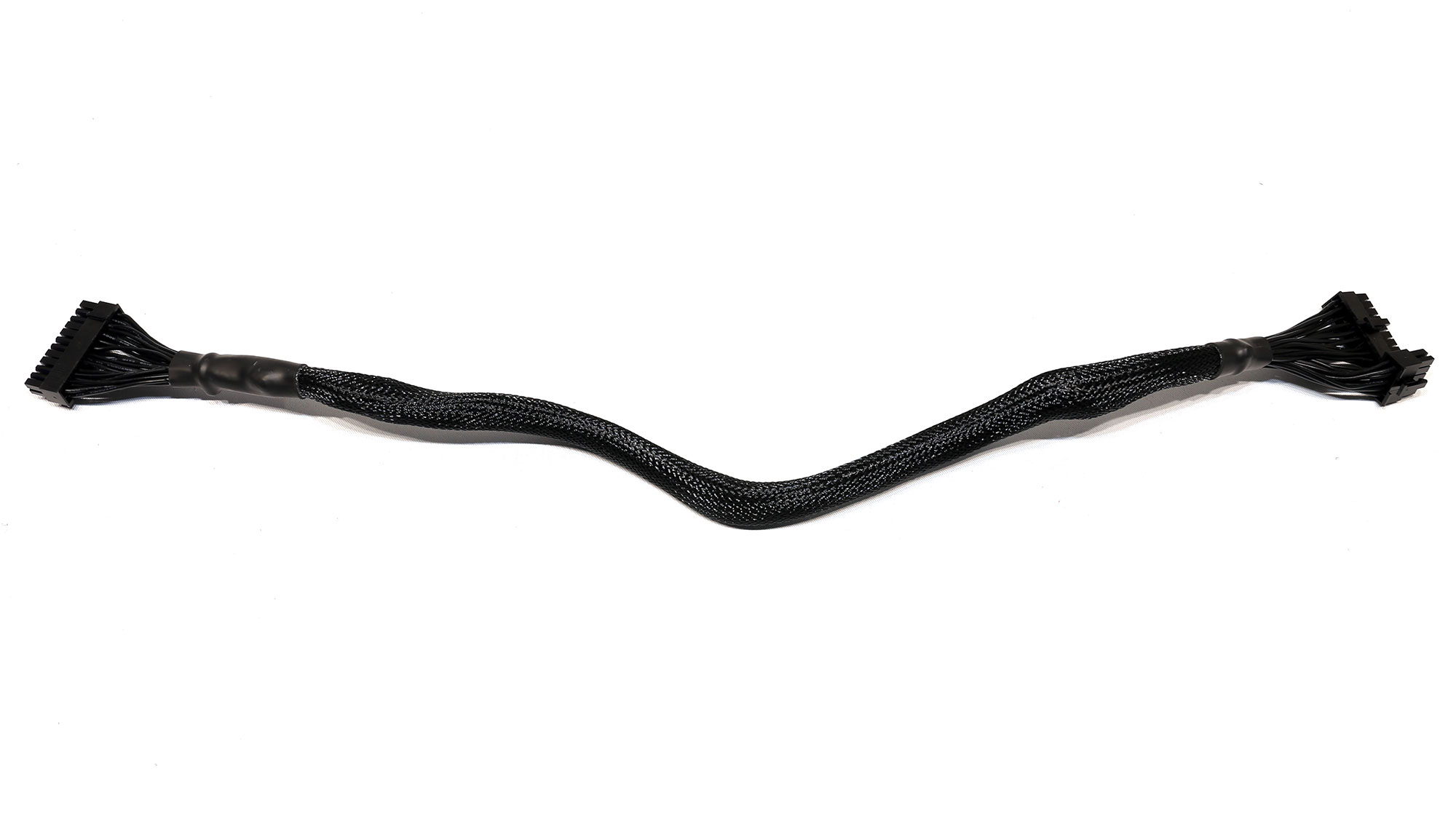



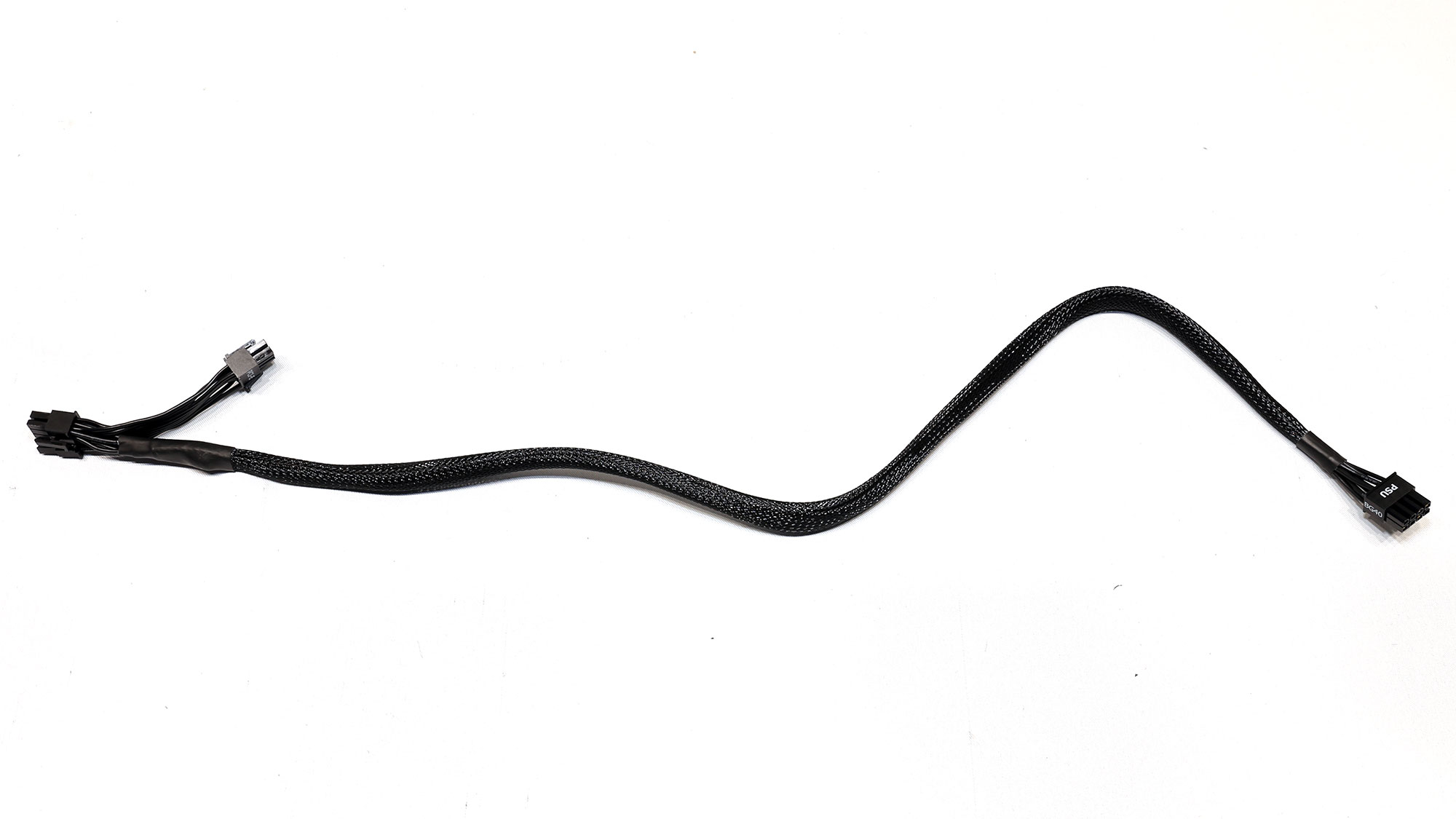




Component Analysis
We strongly encourage you to have a look at our PSUs 101 article, which provides valuable information about PSUs and their operation, allowing you to better understand the components we're about to discuss.
| General Data | |
| Manufacturer (OEM) | Seasonic |
| PCB Type | Double Sided |
| Primary Side | - |
| Transient Filter | 4x Y caps, 2x X caps, 2x CM chokes, 1x MOV, 1x Discharge IC |
| Inrush Protection | NTC Thermistor (MF72-5D15M) & Relay |
| Bridge Rectifier(s) | 2x GBU1006 (600V, 10A @ 100°C) |
| APFC MOSFETs | 2x Infineon IPA60R180P7S (650V, 11A @ 100°C, 0.18Ohm) |
| APFC Boost Diode | 1x STMicroelectronics STTH8S06 (600V, 8A @ 25°C) |
| Hold-up Cap(s) | 1x Hitachi (400V, 470uF, 2,000h @ 105°C, HU) |
| Main Switchers | 4x Great Power GPT10N50AD (500V, 9.7A, 0.7Ohm) |
| APFC Controller | Champion CM6500UNX |
| Resonant Controller | Champion CM6901T6 |
| Topology | Primary
side: Full-Bridge & LLC converter Secondary side: Synchronous Rectification & DC-DC converters |
| Secondary Side | - |
| +12V MOSFETs | 2x Nexperia PSMN1R8-40YLC (40V, 100A @ 100°C, 3.25mOhm @ 150°C) |
| 5V & 3.3V | DC-DC Converters |
| Filtering Capacitors | Electrolytic: 2x Nippon
Chemi-Con (105°C, W), 6x Nippon
Chemi-Con (1-5,000h @ 105°C, KZE), 3x Nippon
Chemi-Con (4-10,000h @ 105°C, KY), 3x Rubycon (3-6,000h @ 105°C, YXG) Polymer: 8x Chemi-Con, 3x FPCAP, 6x NIC |
| Supervisor IC | Weltrend WT7527V (OCP, OVP, UVP, SCP, PG) |
| Fan Model | Hong Hua HA1225H12F-Z (120mm, 12V, 0.58A, 2200 RPM, Fluid Dynamic Fan) |
| 5VSB Circuit | - |
| Rectifier | 1x SBR |
| Standby PWM Controller | Excelliance MOS EM8569 |

Overall Photos



This is the Seasonic Focus Plus Gold platform, which is among the most popular in today's market since it offers good performance at a fair price. The build quality is high and Seasonic used good parts with all electrolytic caps on the secondary side provided by Japanese manufacturers. It would be nice, though, to see more KY caps and less KZE ones, which have a notably lower lifetime.
Get Tom's Hardware's best news and in-depth reviews, straight to your inbox.

Transient filter
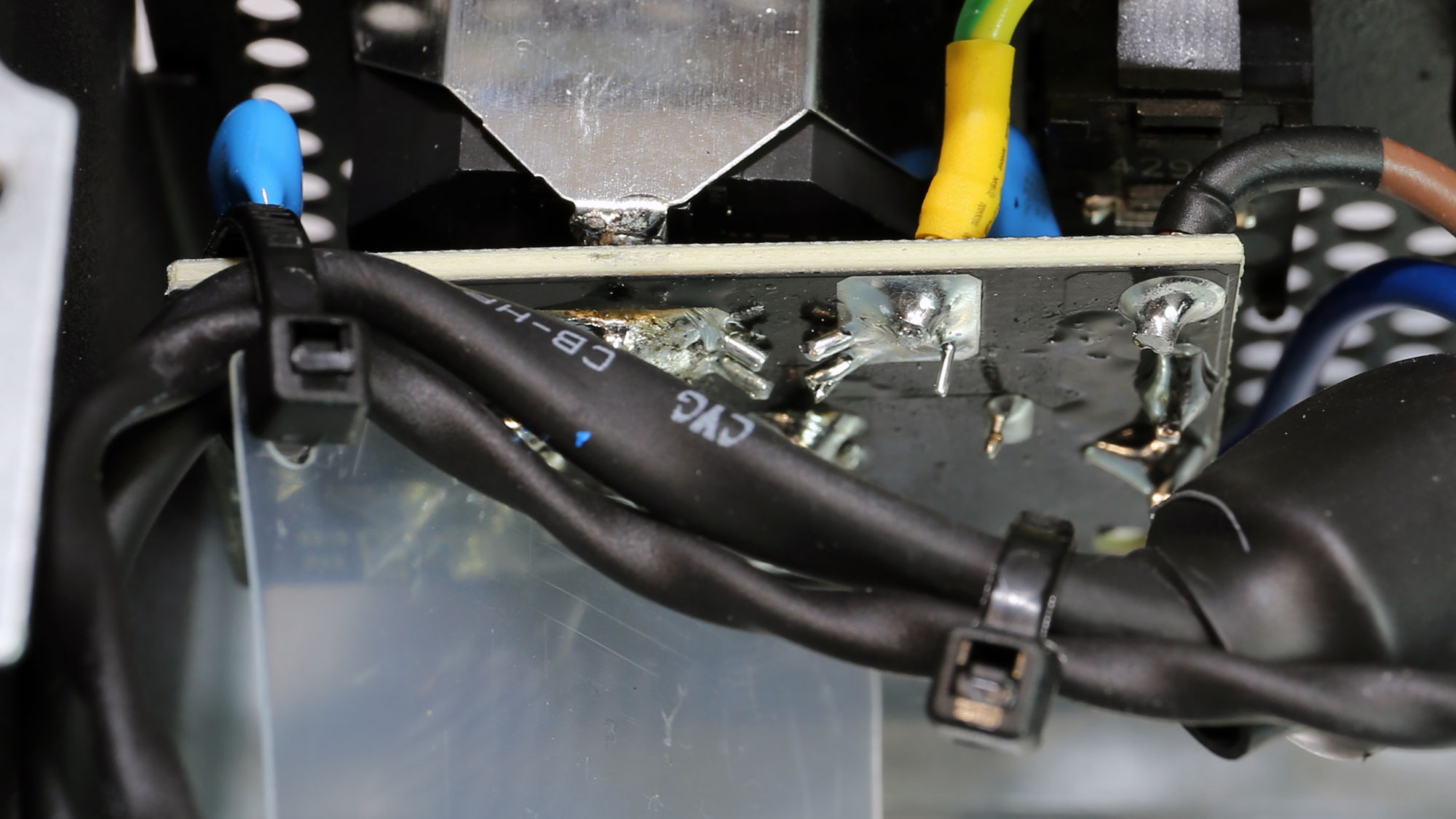




The EMI filter includes all necessary parts to filter incoming and outcoming EMI emissions. There is also an MOV to suppress voltage spikes coming from the network and an NTC/relay combo protect against large inrush currents.

Bridge rectifiers

The pair of bridge rectifiers is bolted on a dedicated heat sink.
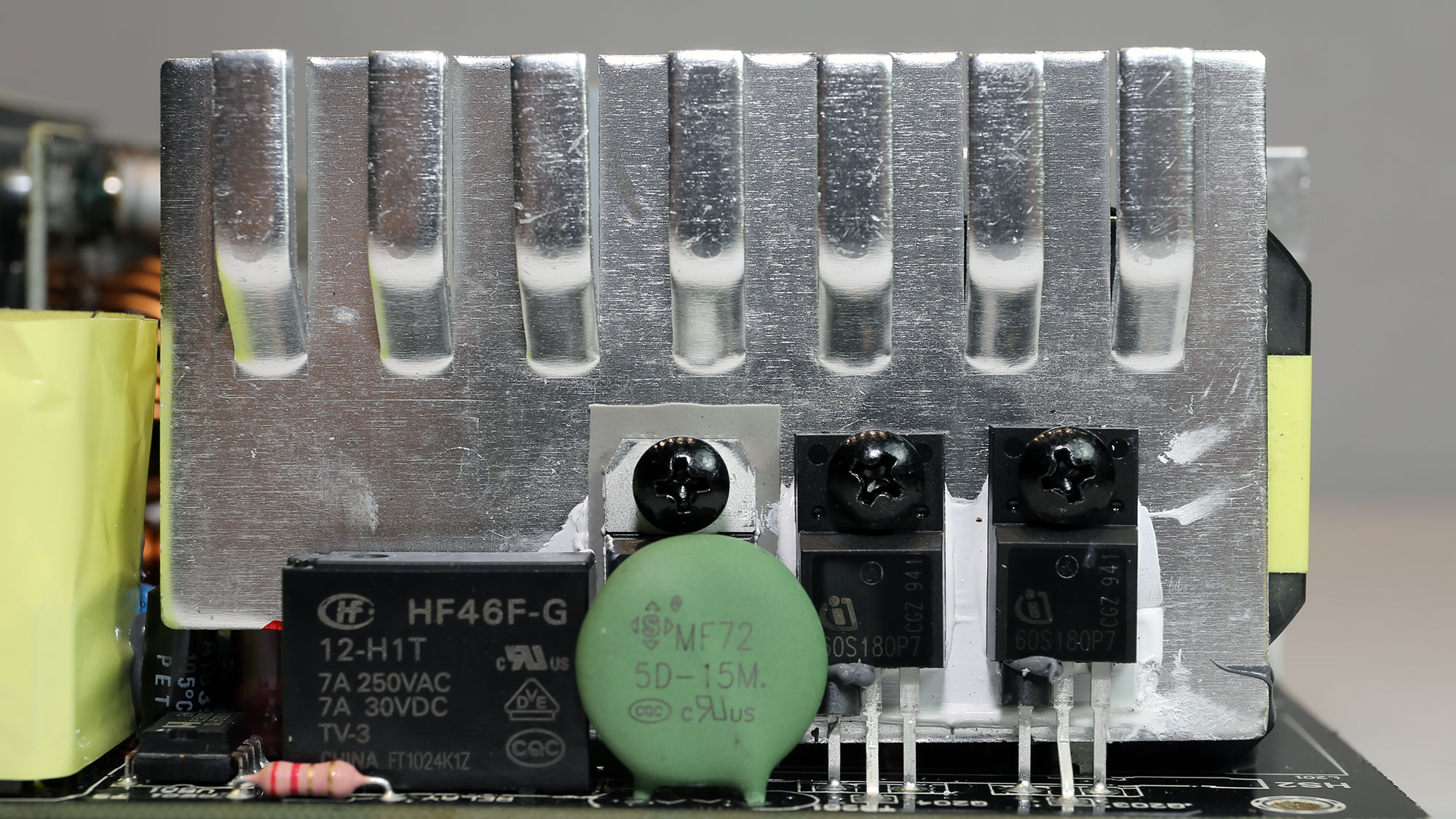
APFC converter

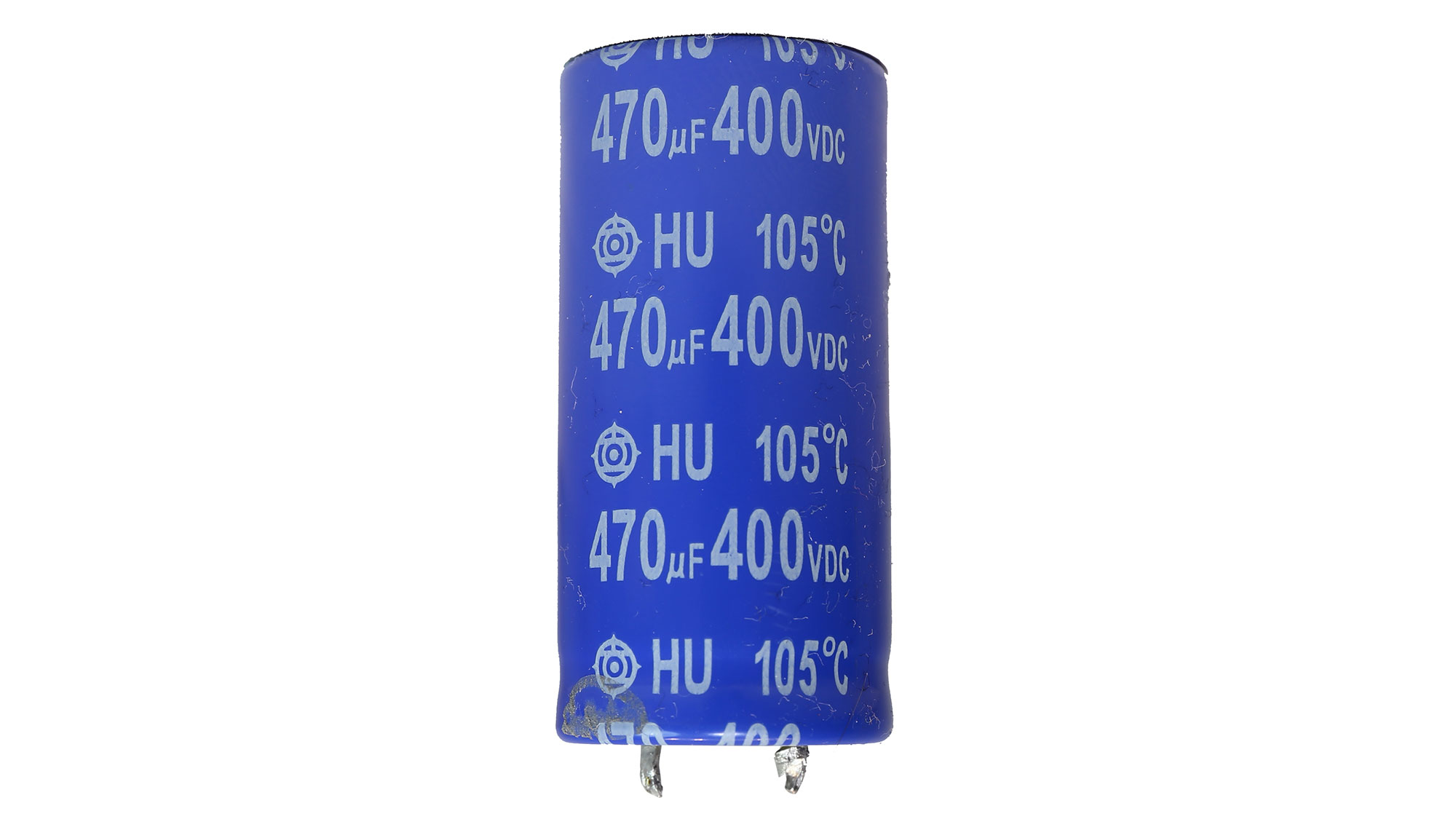

The APFC converter uses two Infineon FETs and a single STMicroelectronics boost diode. The bulk cap is by Hitachi, and its capacity is enough to offer a much longer than 17ms hold up time.

Main FETs and primary transformer



The main switching FETs, four GPT10N50AD, are installed in a full-bridge topology which offers the best performance.

12V FETs and VRMs
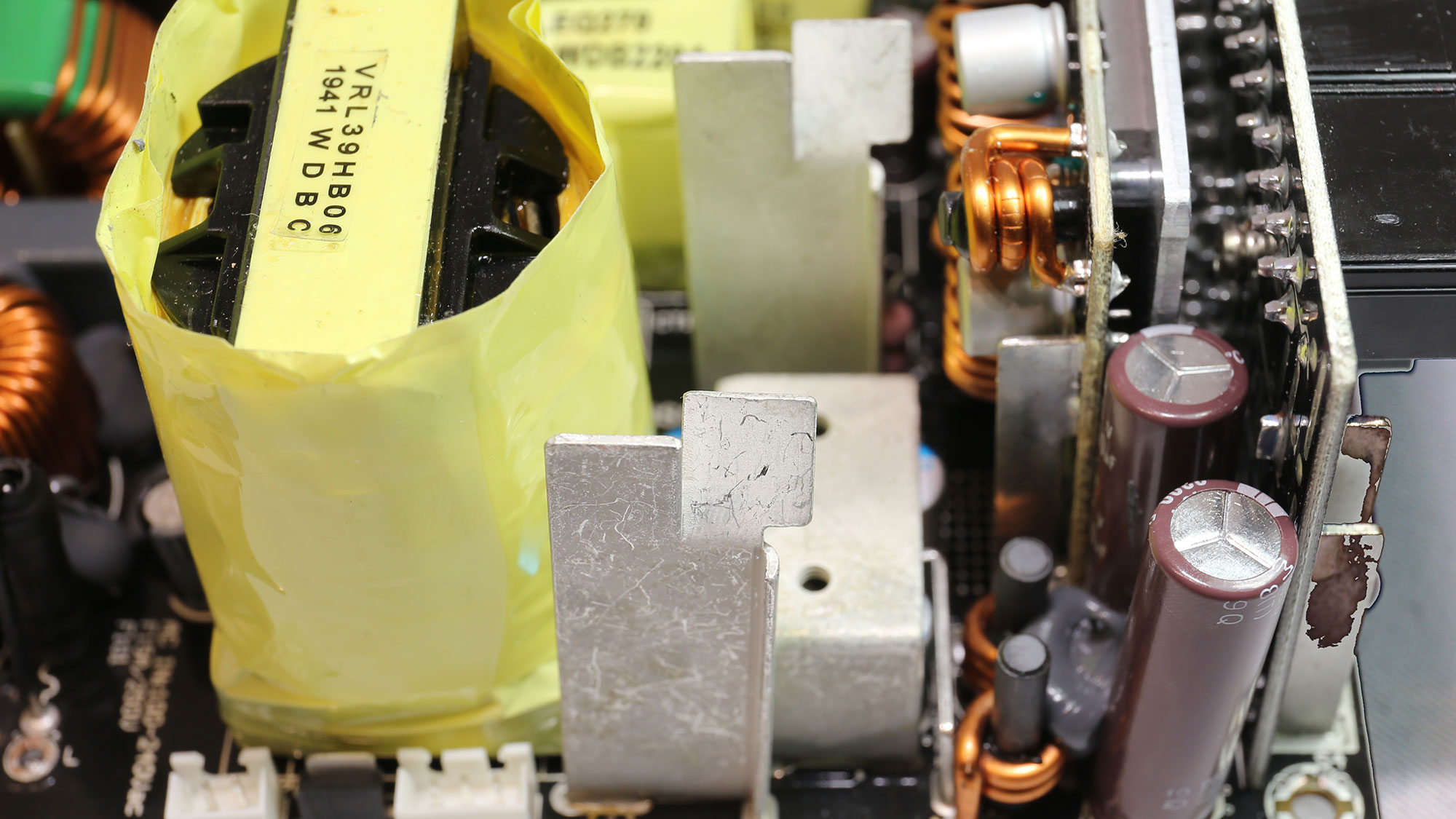


Two Nexperia FETs handle the 12V rail, and a couple of VRMs generate the minor rails.

Filtering caps


Chemi-Con provides most electrolytic filtering caps. It would be nice if more KY caps were used, instead of the lower lifetime KZE ones. Besides electrolytics, a large number of polymer caps is also used for ripple filtering purposes.

Modular board front


Four polymer and three electrolytic caps are installed at the face of the modular panel. There is room for more polymer caps, but they aren't necessary because ripple suppression is already good.

Soldering quality

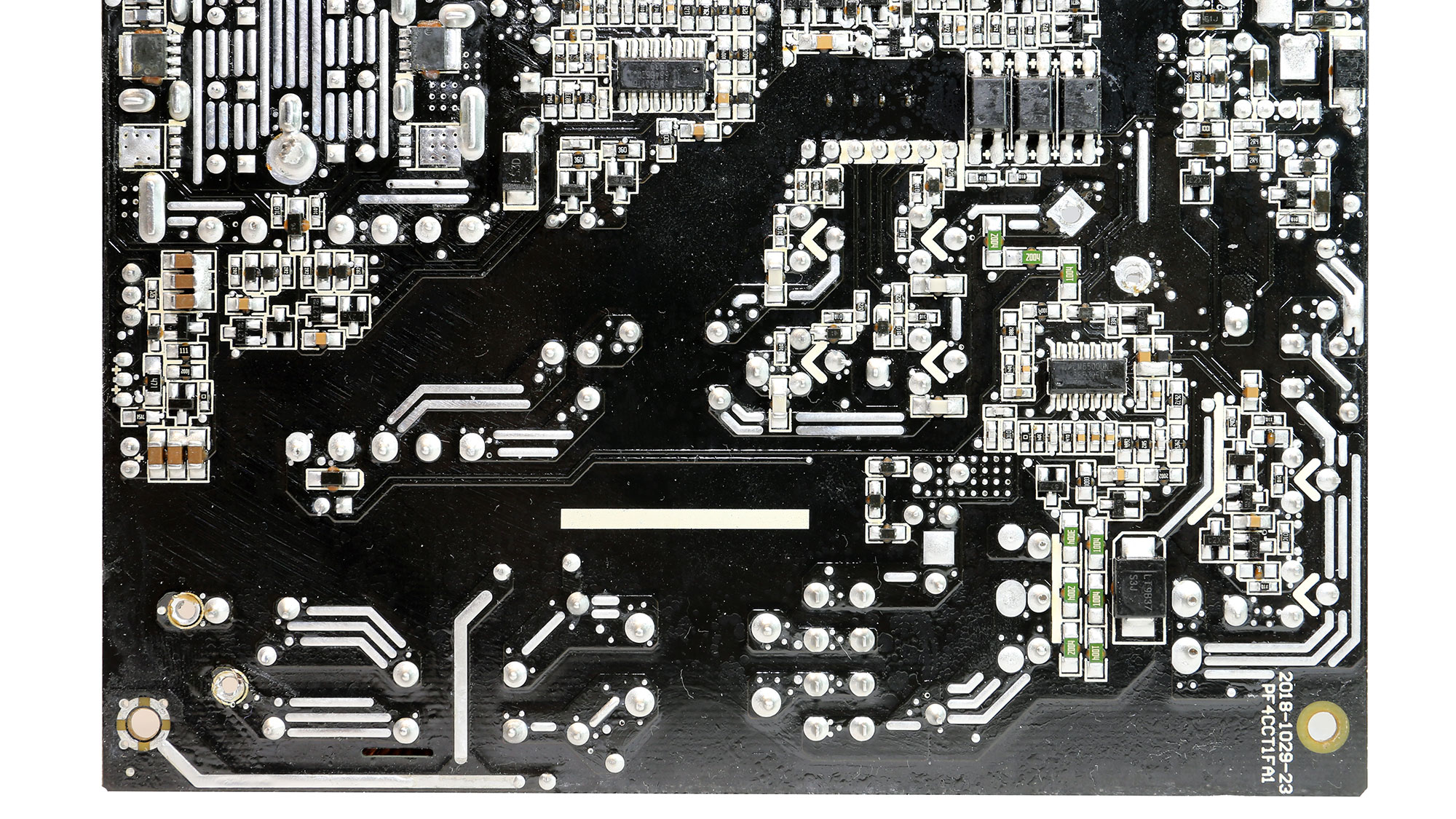

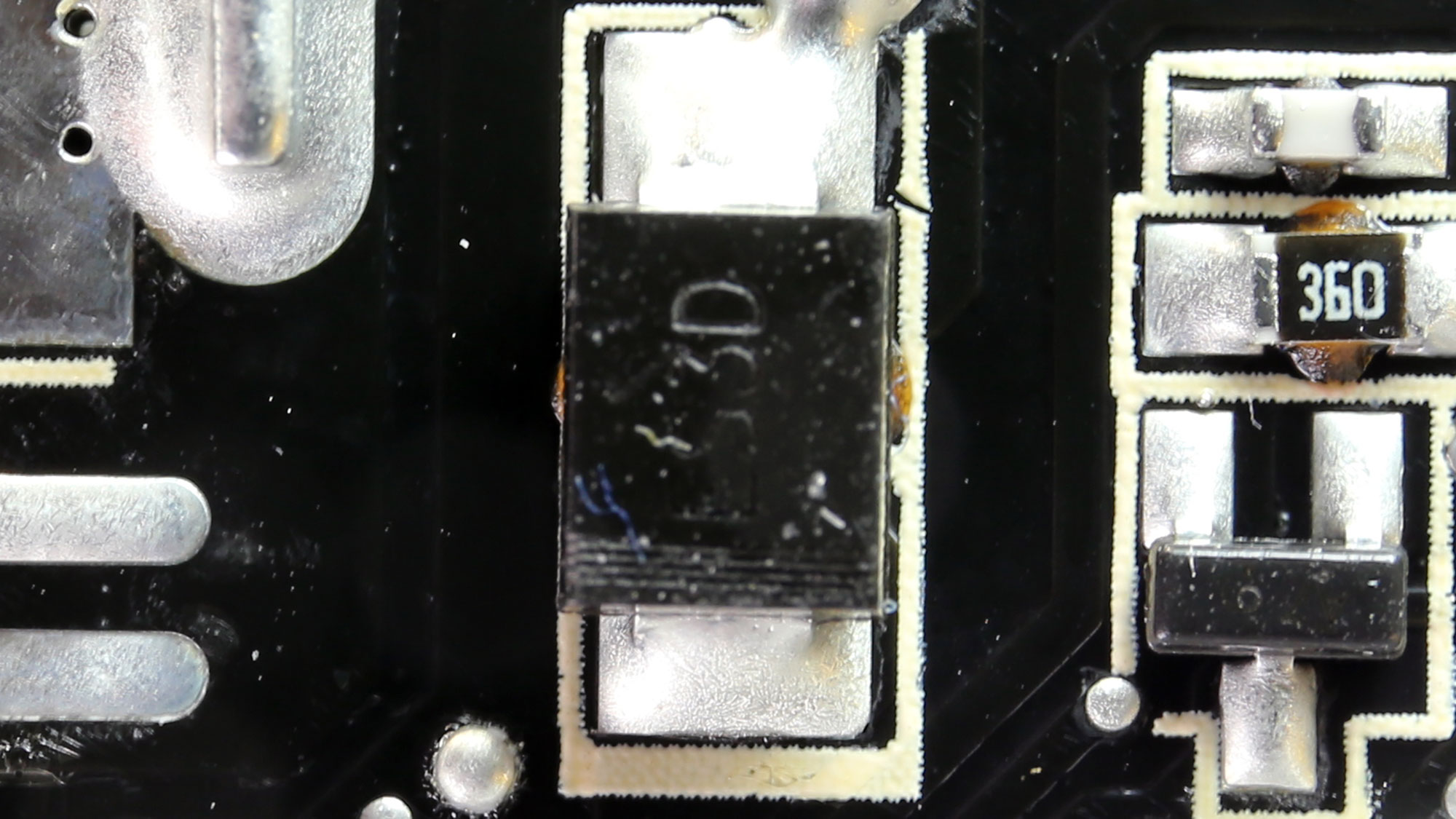


The soldering quality is good. There are lots of interesting parts on this side of the PCB, including the supervisor IC, the APFC and resonant controllers, the 12V FETs and several Schottky Barrier Diodes (SBRs).

Cooling fan


The Hong Hua fan is the standard choice for many manufacturers nowadays since this brand offers good quality at reasonable prices. The C650 comes with a 120mm fan, which uses a fluid dynamic bearing so that it will last for long at normal operating conditions.
Current page: Specifications and Part Analysis
Next Page Load Regulation, Hold-Up Time, Inrush Current, Efficiency and Noise
Aris Mpitziopoulos is a contributing editor at Tom's Hardware, covering PSUs.